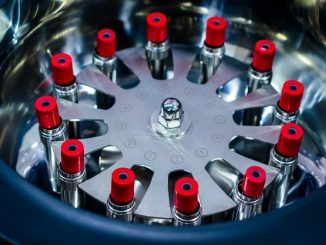
The Application of Callus Culture
Callus culture is a technique used in plant tissue culture to generate undifferentiated masses of cells known as callus. Callus is formed by the unorganized […]

Callus culture is a technique used in plant tissue culture to generate undifferentiated masses of cells known as callus. Callus is formed by the unorganized […]

Magnetic immobilisation is an extremely useful technique. Immobilising cells or enzyme in gel materials which contain colloidal ferrites or magnetite allows the use of magnets […]

Spinning cone technology (SCT) is a revolutionary process that has transformed the field of aroma recovery and preservation in the food and beverage industry. It […]

The manufacture of malic acid using fermentation involves the use of microorganisms, typically bacteria or fungi, to convert specific carbon sources into malic acid. Malic […]

The manufacture of threonine using microbial fermentation involves the use of genetically engineered microorganisms, typically bacteria such as Escherichia coli, to produce threonine in large […]

Fermentation is a process that has been used for centuries to produce a wide variety of products. Some of the top products produced by fermentation […]

Streptomyces fradiae is a species of filamentous bacteria that belongs to the genus Streptomyces. It is notable for its ability to produce the antibiotic tylosin, […]

The nucleosome is the basic structural unit of chromatin, which is the complex of DNA and proteins that make up the chromosomes in eukaryotic cells. […]

Shuttle vectors play a crucial role in biotechnology as versatile tools for the transfer of genetic material between different host organisms. These vectors are designed […]

One of the difficulties in home composting has been the breakdown of woody or cellulosic materials without resorting to burning it. Industrially, there is considerable […]

DNA replication is one of the key fundamental processes of biology. It is the way cells are able to replicate their coding. The DNA polymerases […]
![DNA. Nucleic acid purification. Okazaki fragments. PCR (digital PCR [dPCR], multiplex digital PCR, qPCR), DNA Repair](https://foodwrite.co.uk/wp-content/uploads/2016/11/dna-geralt-pixaby-03539309_640-326x245.jpg)
Okazaki fragments are short sequences of DNA nucleotides that are synthesized discontinuously. They are formed during the process of duplication of DNA. The other strand […]

Crossing over, also known as recombination, is a genetic process that occurs during meiosis, specifically in prophase I of meiosis I. It involves the exchange […]

BHK-21 refers to a cell line derived from the kidney cells of the baby hamster (Mesocricetus auratus). BHK-21 stands for Baby Hamster Kidney-21. It is […]

Ion-exchange chromatography involves the separation of molecules such as proteins based on their charge profile. It is often defined by process engineering texts as the […]

Introduction Centrifugation is one of the standard technologies in the food and biochemical engineering industry for separating particulates from fluids. Some classic examples include the […]

The manufacture of starch is a very traditional process and can only be sourced from plants. It is a key component of the food supply […]

A batch culture is a culturing system for growing microbes and producing microbial products by fermentation. It is a closed system meaning that the fermentation […]

Sex determination refers to the process by which an individual’s biological sex, either male or female, is determined. The mechanisms of sex determination can vary […]

The law of independent assortment, proposed by Gregor Mendel, describes how different genes segregate and assort independently during the formation of gametes (sperm and eggs). […]
Copyright © 2025 | WordPress Theme by MH Themes